Expanding tourism in surrounding areas to ease pressure on Hoi An ancient town
From a bustling and renowned trading port in the 15th and 16th centuries, the ancient town of Hoi An, central Da Nang City, has become a world-famous tourist destination. However, the growing number of tourists has overwhelmed the area, placing considerable pressure on conservation and restoration efforts.

Expanding and developing tourism through green, circular, and experiential tourism, as well as diversifying destinations and tourism products in linked chains, has proven effective in easing the strain on heritage sites. Meanwhile, peripheral destinations around the ancient town, such as Duy Xuyen, Dien Ban, and Thang Binh (formerly), are also developing rapidly. Local living standards have improved, and the tourism environment is being protected.
Heavy pressure on heritage site
Since Hoi An Ancient Town was recognised by UNESCO as a World Cultural Heritage Site in 1999, tourist numbers have increased continuously, contributing to local socio-economic development. Statistics show that in 1999, Hoi An welcomed 100,000 visitors. By 2024, the figure exceeded 4.4 million, including approximately 3.57 million international tourists. Tourism revenue hit a record 5,231 billion VND, indicating a strong recovery and promising outlook for the local tourism industry. In the first half of 2025 alone, total visitor numbers to Hoi An are estimated at 2.8 million, a 17.4% increase compared to the same period in 2024.

Tourism development has driven many commercial and service activities in Hoi An, helping form economic bases and attract community resources. However, rapid development is putting significant pressure on the ancient town’s space.
According to Prof. Dr. Lam Thi My Dung, Head of the Faculty of History at the University of Social Sciences and Humanities, Viet Nam National University, Ha Noi, in recent years, Hoi An has become not just “over” but “over; over; over” – meaning “severely overloaded” with tourists. It is a highly convenient location for tourists travelling from Da Nang to stop, visit, and relax before heading to My Son or other destinations.
“Due to the geographical location of Hoi An and its nearby satellite attractions being so convenient, a huge number of tourists come here. Moreover, before the Covid-19 pandemic, tourism spots and entertainment options in the surrounding areas were underdeveloped, and most tourism products were concentrated in the central ancient town, making the already narrow space even more congested,” shared Prof. Dr. Lam Thi My Dung.
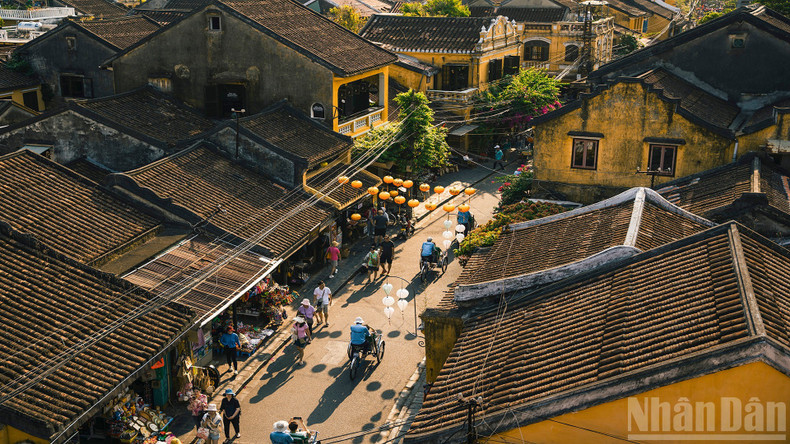
Previously, Quang Nam Province and Hoi An City (formerly) invested in restoring and maintaining relics within the ancient town. As a result, UNESCO recognised Hoi An as one of the best examples of cultural heritage preservation in the Asia-Pacific region. However, Hoi An Ancient Town is now facing numerous challenges in conserving and promoting the value of its heritage.
Statistics show that about 200 houses in the ancient town have been sold or leased to outsiders for business purposes, leading to changes and distortions in the space and lifestyle of the old town. In the past, these ancient houses served religious, familial, and cultural functions, but now they are solely used for commerce. This gradual erosion of Hoi An’s soul calls for urgent urban planning to reduce the burden of tourism, the risk of fire, traffic density, environmental impact, and particularly, to mitigate the effects of climate change.
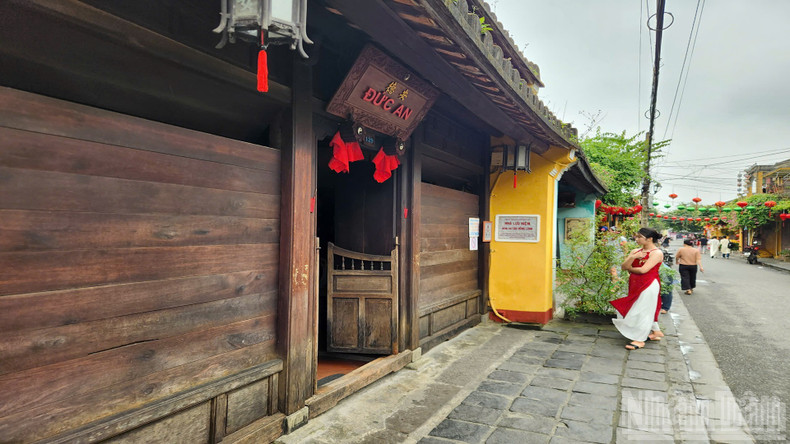
Nguyen Van Son, former Chairman of the People’s Committee of Hoi An City, Quang Nam Province (previously), stated that since becoming a World Cultural Heritage Site, Hoi An has become a highly attractive destination for both domestic and international tourists. Tourism and service revenues have increased, improving local livelihoods. However, preserving the soul of Hoi An’s ancient urban area presents many challenges.
“What we are most concerned about now, beyond individual cases of structural changes for business purposes, is the phenomenon of ‘heritage bleeding’. We use this term because, for various reasons, people are forced to sell their ancient houses. Currently, the value of an ancient house in the old town ranges from 40 to 50 billion VND, leading to unavoidable changes in heritage ownership. This is a legal right of the owners, and we cannot intervene,” said Son.
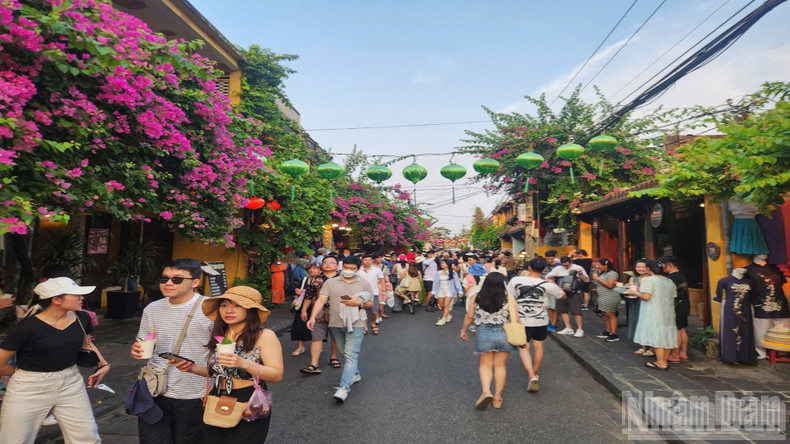
Hoi An possesses complex and unique characteristics rarely found elsewhere. This complexity and uniqueness stem from its geographical location and natural conditions – situated at the mouth of the Thu Bon River, along the Cua Dai coast, and near the Cu Lao Cham Islands. Moreover, its historical development originates from a confluence of diverse ethnic communities that have blended and harmonised throughout history within a modest area. Therefore, the development of Hoi An cannot be separated from heritage. It must be based on the principle: “preservation for development and development for preservation.”
Diversifying tourism products in surrounding areas
In recent years, alongside mobilising investment capital and support from domestic and international organisations to restore hundreds of heritage sites, Hoi An City authorities (formerly) also created many unique tourism products such as: “Ancient Town Night”, “Pedestrian Streets”, night markets… integrated with various festivals and traditional cultural activities, enhancing tourist appeal.
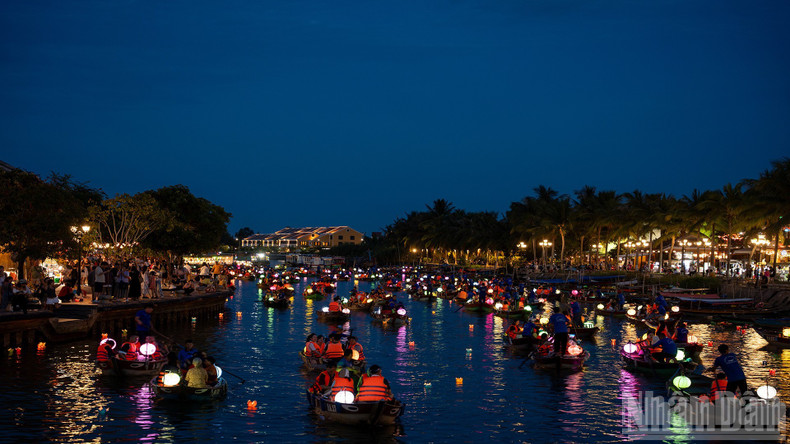
Facing the influx of visitors to the central area, with the advantage of over 50 long-standing traditional craft villages embodying intangible cultural values such as: Kim Bong carpentry village, Triem Tay village, Thanh Ha pottery village, Lam Yen drum village, and the brocade weaving village of the Co Tu ethnic group.
Additionally, Quang Nam Province (formerly) boasts 128 agro-rural tourism sites, including many successful ones such as: Tra Que vegetable village, Bay Mau nipa palm forest in Cam Thanh, Cu Lao Cham, and Tan Thanh fishing village. The locality has reformed its tourism model by leveraging agricultural and rural resources to develop ecotourism, community-based tourism, and experiential tourism, helping to disperse tourist flows into surrounding areas. Especially since the Covid-19 pandemic, more international tourists have been seeking nature-based and ecological tourism experiences.

To unlock local potential, Quang Nam Province (formerly) implemented various policies, plans, infrastructure investments, promotional activities, and support measures for tourism development. These include Resolution No. 13-NQ/TU dated July 20, 2021, by the Quang Nam Provincial Party Committee on the development of trade and tourism to 2025 with a vision to 2030, and the Green Tourism Development Plan to 2025. Quang Nam was also the first locality in the country to publish a set of Green Tourism Criteria.
Silk Sense Hoi An River Resort in Hoi An Tay Ward, Da Nang City is one of 11 establishments certified under the Quang Nam Green Tourism Criteria by the end of 2022. In early September 2023, it became the first zero plastic waste hotel in Viet Nam. Tran Thai Do, investor of Silk Sense Hoi An River Resort, shared that with a sustainable development vision, the resort has pursued an “Environmental Protection Journey” using eco-friendly materials and plastic waste reduction programmes. The hotel has set specific criteria and solutions for each waste issue and implemented them comprehensively to completely eliminate plastic waste on site.
“Declaring ourselves a zero plastic waste hotel puts us under constant pressure to comply and maintain this status. Beyond generating profit, it proves that the hotel is environmentally friendly and meets the demands of responsible travellers. It also allows us to fulfil our mission and sustainable development journey alongside Viet Nam’s tourism industry,” Do said.

Meanwhile, the Hoiana Resort & Golf complex was built along a 4km coastal stretch in Duy Nghia commune, Da Nang City. Previously, this area consisted of barren white sand and rundown houses. Although adjacent to bustling Hoi An, locals primarily relied on fishing for their livelihoods. Since the commencement and operation of the Hoiana resort project, local fishermen have gradually transitioned into new occupations.
Alan Teo, CEO of Hoiana Resort & Golf, noted that overtourism is a global issue. In Viet Nam, tourists still focus on a few key destinations, while nearby areas are underdeveloped and unable to share the visitor load. Seeing green tourism as merely environmental protection is insufficient, one must understand each destination’s carrying capacity, devise visitor distribution strategies, and create value for the local community. This is a necessary path if Viet Nam in general, and Da Nang and Hoi An in particular, wish to pursue in-depth tourism development rather than merely counting visitor numbers.

“Hoiana has chosen to develop in harmony and support the overall tourism ecosystem of Da Nang and Hoi An. We create an environment that is both eco-friendly and rich in local identity – a place where tourists can relax while connecting with local culture and people. This helps to rationally distribute visitors, reduce pressure on the ancient town, prolong stays, and increase spending. Furthermore, for Hoiana, green tourism is not only about dispersing visitors and expanding experiences but also preserving cultural resources and contributing to the sustainable development of Hoi An tourism,” Alan Teo said.
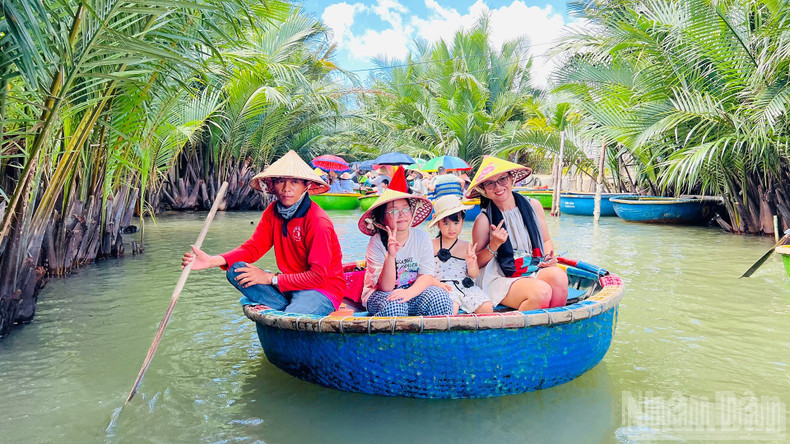
Deputy Director of the Da Nang Department of Culture, Sports and Tourism Van Ba Son stated that diversifying tourism products and focusing on community-based tourism will make Da Nang a truly unique and distinctive destination with signature offerings.
“Expanding community tourism to peripheral areas around the ancient town will broaden the space for tourism development. Tourism activities will no longer be confined to the city centre but will extend to nearby craft villages and rural areas that are not far away and have many attractive destinations. This creates a more open tourism space and facilitates the construction of infrastructure and broader participation of local communities in benefiting from tourism,” Son said.








